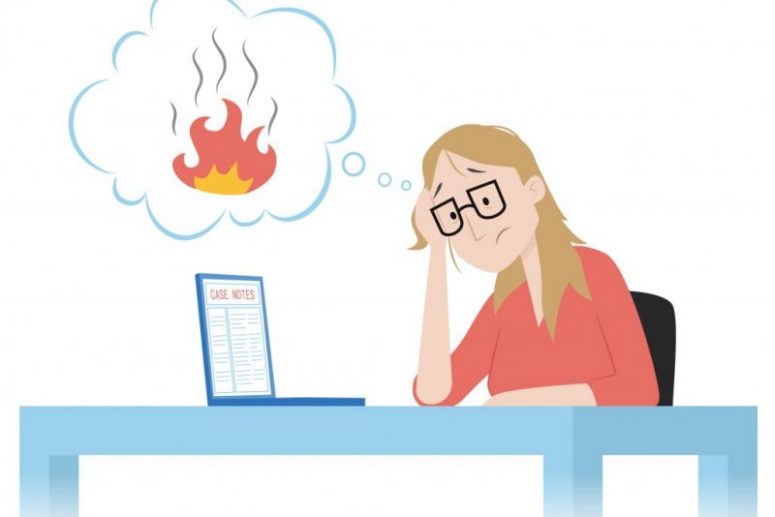It’s strange to think that therapists can experience a burnout. Aren’t we the ones who are supposed to be full of never-ending patience and empathy? Aren’t we the masters of maintaining healthy relationships and our own self-care? This is after all what we emphasise mostly to our clients during therapy. Yet, while we do try our best to achieve this, it doesn’t mean we’re immune to a burnout.
According to the World Health Organisation (2019), a burnout is defined as a “syndrome conceptualized as resulting from chronic workplace stress that has not been successfully managed.” It leaves people in a state of emotional, mental and physical exhaustion due to the prolonged stress experienced. This stress can become overwhelming, leaving you unable to meet demands. Thus, when looking at this definition, a burnout can be seen as a common pitfall of being a therapist. We are constantly providing a service to different clients which is based on our energy, feelings and thoughts. Thus, yes, we can experience burnouts.
How can you tell if you’re experiencing a burnout?
- No motivation to go into work anymore
- Lose focus during sessions
- Rather than helping a client grow, you take the shortcut and offer them advice instead
- Lack of empathy when relating to clients
- Start sessions late or finish them early
Feelings of burnout can range from being less intense to becoming so intense that you can no longer function in your daily life. Thus, if you’re feeling any of the above symptoms, I want you to try out the following steps to prevent a full-blown burnout;
- Seek therapy – When we’re studying to become therapists, there’s a focus on going to personal therapy. The idea being that you can’t help your clients if you aren’t helping yourself. Thus, the issue arises when we finish the course and no longer think we need to go to therapy. This is a wrong ideology because if you want to have meaningful work with your clients, then you need to learn to manage the stress of being a therapist.
- Maintain self-care – By learning how to incorporate self-care into your daily life, it can help minimize the experience of a burnout. Practicing self-care can be as easy as taking a break to spend time with your family or friends. Self-care involves putting up boundaries between your professional and personal life; this will help you make time for yourself.
- Don’t take work home – This point goes along with keeping boundaries between your professional and personal life. Therapists can easily feel a burnout if they never shut off from their clients. Returning phone calls and emails after your working hours or on the weekends can be too much. Finish answering your emails when you’re at work, make sure clients contact you only in cases of emergency, and let home be your safe place.
- Pick up a hobby – Working as a therapist can’t be both your work and your hobby. It’s important to have a life outside therapy that includes hobbies, physical activities, or anything that helps energise you after a day of work.
- Quit – This might be the last point you expected to see but it needs to be said. If you’ve tried the above strategies and even some others, and your passion for the job is no longer there, then it might be time to look for something else. It’s normal to sometimes outgrow our profession when it’s no longer satisfying for us. Instead of forcing yourself to work in a joyless environment, which doesn’t help either you or your client, then it’s all right to find something else that excites you.
Your identity as a “therapist” is a valuable one, but not your entire life. By practicing self-care and keeping healthy boundaries, being a therapist can be an incredibly fulfilling career path.
Mandy is a Gestalt psychotherapist who enjoys working therapeutically with adults on various issues. These include general mental health and wellbeing. She also has experience working with anxiety, victims of domestic violence and eating disorders.
References:
- Fraga, J. (2019). Why the WHO’s Change in Definition of Burnout Is So Important. Retrieved from https://www.healthline.com/health/mental-health/burnout-definition-world-health-organization#Knowing-how-to-diagnose-a-medical-concern-can-lead-to-better-treatment
- Howes, R. (2008). Therapist Burnout. Retrieved from https://www.psychologytoday.com/us/blog/in-therapy/200811/therapist-burnout
- Wohleber, C. (2017). Therapist Burnout & How to Prevent It. Retrieved from https://blog.time2track.com/what-causes-therapist-burnout-how-can-it-be-prevented/

